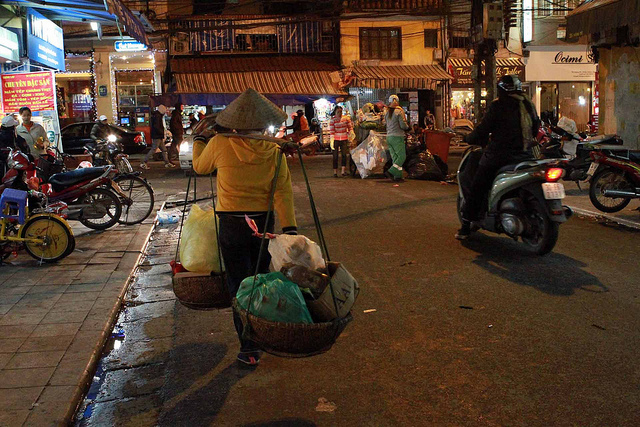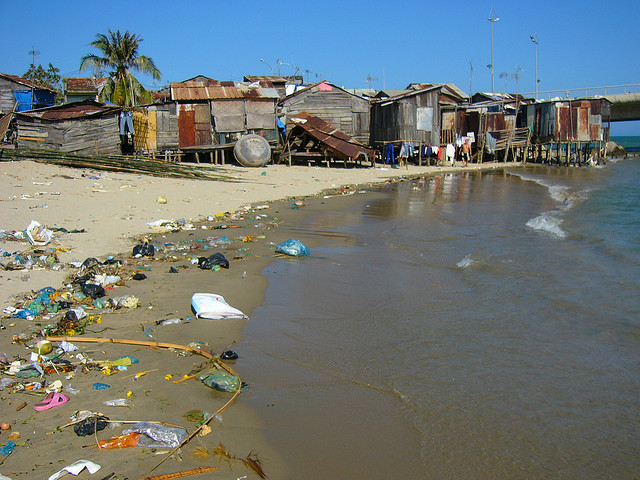When the world’s largest development agency speaks, the rest of the NGO/NPO community listens–whether to critique, scrutinize or get new ideas from.
Following its May update on the East Asia and Pacific region, the World Bank has released the results of the mid-year World Bank Group-Vietnam consultative discussions and made public the newest Vietnam country cooperative strategy for 2012 – 2016. We’ve been soaking up all the information these two reports have to offer. Between the cooperation strategy and consultative discussion, there are over 200 pages of material. Much of it underscores what many us can feel instinctivelly: that after a quarter century of model development, Vietnam’s growth has slowed; that much of Vietnam’s earlier growth came at the expense of the environment and plans for sustainable must be set in motion; and that Vietnam’s human capital, infrastructure and innovation systems must be developed for it to avoid the “middle income trap.” But all is not grim–buttressed by a young workforce and a strong export portfolio (for the time being), Vietnam has plenty of potential to tap into.
So that you can avoid pouring days over the two reports, we’ve perused, combined and summarized highlights from both.
The Big Picture
After a period of rapid progress, Vietnam is entering a period of sluggish growth. The first quarter of 2012 saw the economy grow by a lower-than-expected 4%. Part of the slowdown is cyclical. In February 2011, the government had put in place several stabilization mechanisms, including slowing down credit growth and de-dollarizing the economy. These stabilization efforts were designed to shield households from energy spikes and cool inflation, which rose to an alarming 23% in August of last year (it’s natural for inflation to rise quickly in periods of rapid growth). The stabilization has indeed been effective in curbing inflation; inflation rates returned to 8.5% in May 2012. However, Vietnam’s growth has been slowing for the last 5 – 6 years, long before stabilization began.
Vulnerabilities. There are many.
As Vietnam becomes more integrated into the global economy, it also becomes more vulnerable to global shocks. Vietnam is increasingly embracing the open market (albeit through a state-directed approach), which means it will not be insulated from global events. Currently, Vietnam has a high trade to GDP ratio, a large share of foreign investment and a big remittance market.
Vietnam needs to take better care of its environment. Water pollution has become an especially disconcerting issue, as are waste management, sanitation and transportation. Natural habitats are declining and climate change could further effect the country’s vitality.
Growth in the agricultural and service sectors has fallen. Earlier in the year, demand for rice exports had fallen such that “the government had to buy 1 million tons of paddy in the Mekong delta to protect farmers from falling prices” (see page 15 in the consultative discussion). Central Highland coffee exports have also suffered because of coffee trading companies facing financial difficulties. Meanwhile, in the service sector, high inflation rates earlier in the past 12 months led to decreased private consumption.
Room for Improvement
Vietnam absolutely needs to develop its human capital. In particular, education attainment gaps are widening between the poor and non-poor, the ethnic Kinh majority and the ethnic-minority. A “results-oriented education system” is being recommended for Vietnam.
Vietnam’s “high value added manufacturing” production is on the incline. Garment exports have increased, and against some expectations, so have Vietnam’s electronic exports. Across the Asia Pacific, exports of computers and machines have remained generally flat. But Vietnam stands out as having increased its share of electronic exports. Cell phones and related accessories now make up the 2nd largest export item for Vietnam, and it’s been predicted that they will be the largest in 2013.
The Poverty Situation
Good news: Vietnam’s poverty situation continues to improve and poverty is expected to decline even further. However, just as the economy’s growth is expected to slow, poverty reduction is also expected to slow. Moreover, the World Bank’s forthcoming 2012 Poverty Assessment of Vietnam is suggesting that the General Statistics Office and World Bank update its definition of poverty line for Vietnam. The new definition would define the poverty line at 653,000 VND person/month or $2.24 person/day based 2005 purchasing power parity. This new definition would put the portion of the population in poverty in 2010 at 20.7%–more than the 14.5% for 2010 commonly cited elsewhere, but still less than countries with comparable GDP, including India and Nigeria.
Inequality is on the incline. Farmers are suffering from reduced profit margins and wages remained relatively flat. Poverty has become increasingly concentrated in ethnic minority groups. Although ethnic minorities make up about 15% of the population, they constitute nearly half of the remaining poor and 2/3 of the extreme poor. The rich-poor gap (the ratio of average income in the richest 20% of the population to the poorest 20% of the population) rose from 8.1 in 2002 to 9.2 in 2010.
It’s Still a Man’s World
In comparison to many other countries, Vietnam’s females and males are relatively equitable. Still, women are not given in equal voice in the public sphere. 30% of women have experienced physical abuse and 50% have experienced emotional abuse. Women earn 75% of what men make, and occupational and industrial segregation remains a problem.
To the Future
Looking ahead, Vietnam faces the challenge of averting the “middle income trap.” To do so, it will have to achieve macroeconomic stability, develop the country’s business and physical infrastructure, reverse the high cost of interacting with government agencies, reform state-owned enterprises and make policy information more transparent and accessible. Additionally, it will have to shift towards higher productivity, product and process innovation. Education must be in line with technology and innovation systems.Vietnam’s future partnership with the World Bank Group will be based on 3 pillars: competitiveness, sustainability and opportunity.
Images from Creative Commons via Flickr users gudi and chris, NowYouSeeUs, Lisa & Alec, Jameson Wu, melaniedornier.photoshelter.com and peregrinari.









